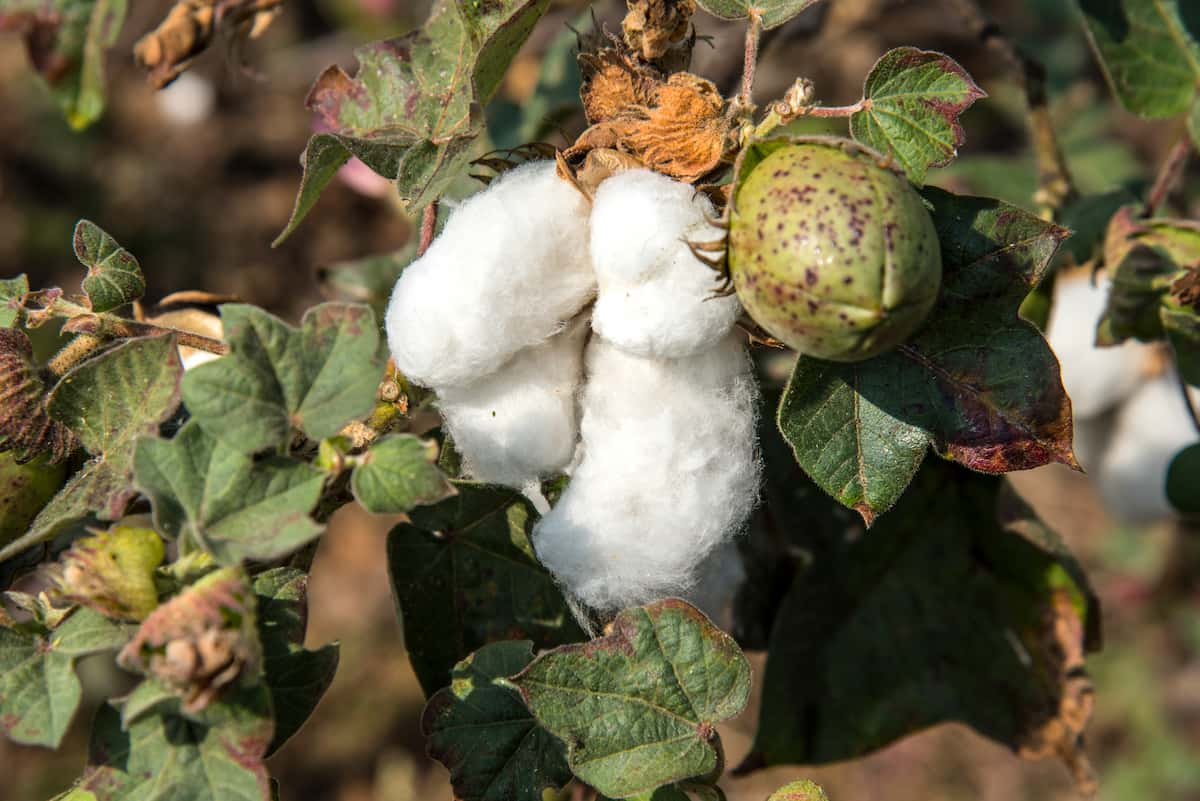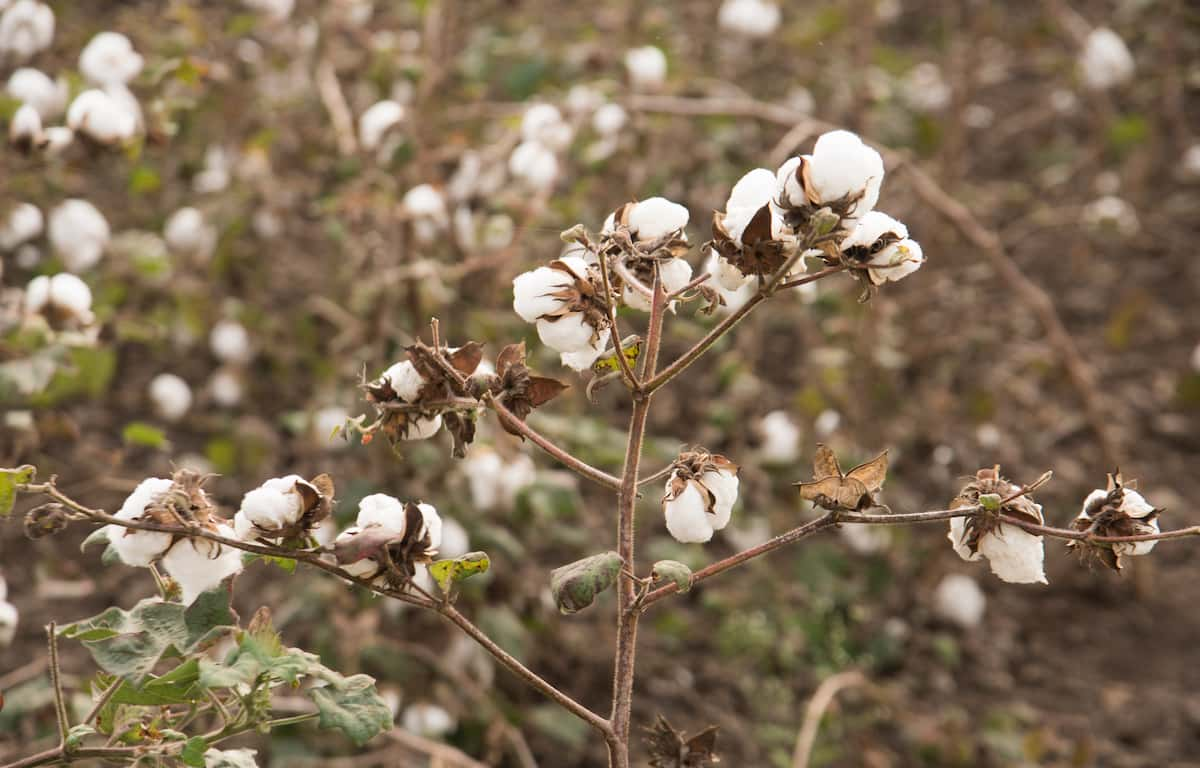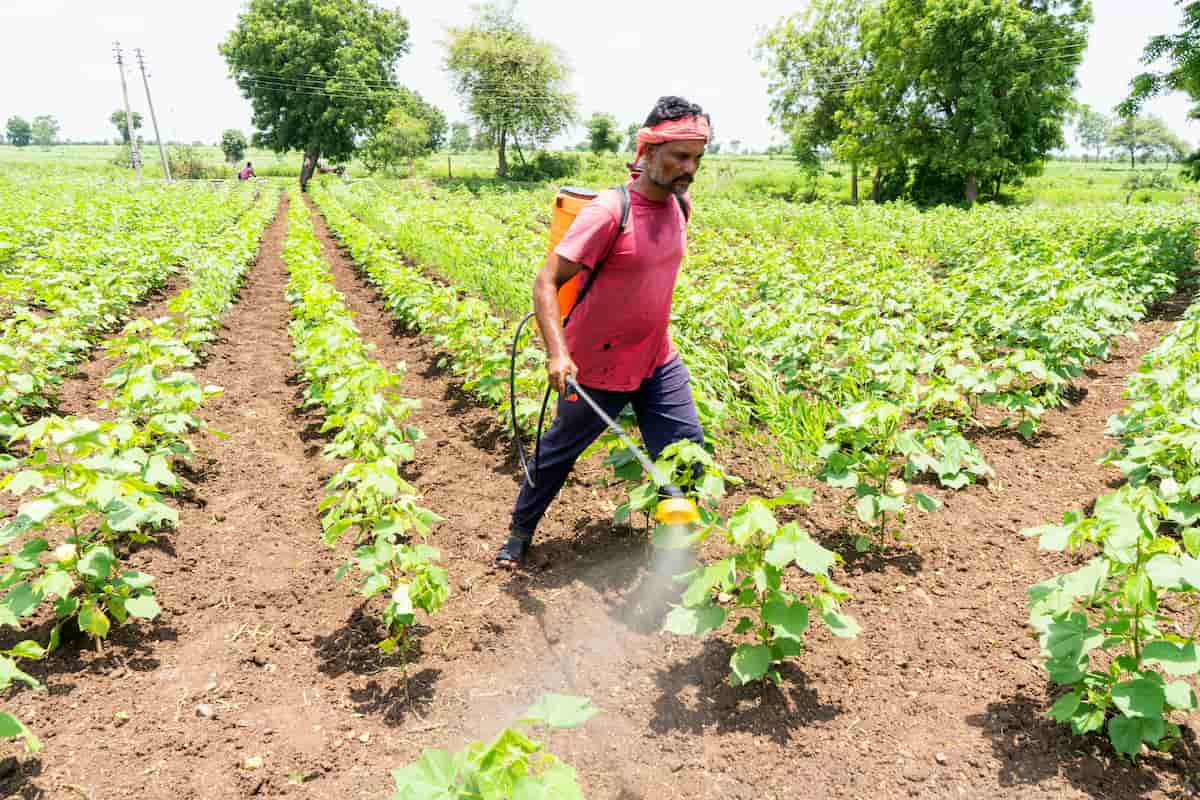Spotted Bollworms belong to the species Earias vitella and E. insulana. They are part of the Noctuidae family and order Lepidoptera. They are known for causing damage to crops such as Cotton and bhendi. The main identifying feature of these insects is their green, dull-colored body with black longitudinal spots and tiny stout bristles. The spotted bollworm, Earias vittella, is a common pest in the southern regions of India.

The larvae of the spotted bollworm cause damage. In India, Earias insulana is found in the north, while Earias vitella is a prevalent pest in the south. Alternative host plants for the pest include Hibiscus, Holyhock, Sunhemp, China rose, bhendi, pundi, Abutilon indicum, and others.
Spotted Bollworms management in Cotton
The life cycle of Spotted Bollworms
- Moths: Pale with green features, approximately 2 cm long, can be found on flowers or close to light sources. Forewings are pale with bright green streaks, and hind-wings are silky-white suffused with pale brownish-grey.
- Eggs: Blue, laid singly on young shoots, leaves, and squares.
- Larvae: Light brown with grey to green and pale along the mid-dorsal line. Fully grown larvae are up to 1.8 cm long and covered in tiny spines visible under a hand lens.
- Pupation: Maturing larvae pupate in a silken cocoon attached to leaves or fallen plant parts.
- Generation Time: A generation is complete within 20-25 days under tropical conditions. Low temperatures can delay the process for up to two months.
Identification of the Spotted Bollworms
E. vitella and E. insulana are spotted bollworm species commonly found in cotton crops.
E. vitella Identification:
- Larva: The larva of E. vitella is brownish with white streaks along the mid-dorsal line and pale yellow ventrally. It does not have finger-shaped processes.
- Adult: The adult of E. vitella is small and buff-colored, with pea green forewings with a wedge-shaped white band running from the base to the outer margin.
E. insulana identification
- Larva: The larva of E. insulana is brown with a white median longitudinal streak on the dorsum. The last two thoracic segments and all the abdominal segments have two pairs of fleshy tubercles, one dorsal and the other lateral.
- Pupa: The pupa of E. insulana is brown and boat-shaped.
- Adult: The adult of E. insulana is small and buff-colored, with uniformly silvery green forewings.
Symptoms of damage by Spotted Bollworms
- Flare square, or flare-up, symptoms are common in cotton crops damaged by spotted bollworm.
- When bolls are attacked, larval feeding spoils the lint.
- Caterpillars that have just hatched burrow into the fragile shoots, causing the plant to wither, droop, and dry up.
- Caterpillars travel from the shoots and begin destroying the bolls by creating holes as the squares and bolls develop.
- The growing bolls have been harmed, and some may fall to the ground.
- Non-shedding-infested bolls are killed by larvae consuming the seeds and filling them with feces. As a result, these afflicted bolls may open early and in a poor manner.
In case you missed it: Tobacco Cutworm Management in Cotton: Symptoms, Treatment, Chemical, Biological, Natural, and Organic Control

Impact of Spotted Bollworms on Cotton crop
During the pre-flowering stage of the cotton crop cycle, the terminal branches of the plant dry out and droop. It can also result in the shedding of squares and young bolls. The plant’s bracts may flare up during the square and juvenile boll development stages. Holes and decay may also be present in the bolls. Finally, causing yield loss to the cotton crop.
Monitoring Infestation of Spotted Bollworms management in Cotton
The Economic Threshold Amount (ETL) is the quantity or level of a pest population (e.g., Spotted bollworms) that, if unchecked, would cause economic harm to a crop. The ETL in this situation is defined as 10% infected shoots/squares/bolls. It implies that if the pest infests 10% of the shoots, squares, or bolls, action must be taken to limit the pest population to prevent additional economic harm to the crop.
Spotted Bollworms management in Cotton by cultural method
- Leave sufficient distance between plants.
- Plant trap crops like hibiscus and okra.
- Provide uncultivated marginal areas to break the life cycle.
- Ensure early planting to avoid peak populations.
Spotted Bollworms management in Cotton by Biological method
- Scout for eggs or small larvae is crucial in the management of this pest.
- Use parasitoid insects of the Braconidae, Scelionidae, and Trichogrammatidae families.
- Promote predatory insects from Coleoptera, Hymenoptera, Hemiptera, and Neuroptera.
- Avoid broad-scale pesticides; instead, use bioinsecticide sprays of Bacillus thuringiensis
- Bacillus thuringiensis serovar kurstaki 5%WP for cotton field treatment. The recommended application rate is between 750 and 1000 grams per acre.
Spotted Bollworms management in Cotton by chemical method
- Chemical treatment is recommended when ten eggs or five small worms per 100 plants are present during early bloom
- Chemical treatment should be applied during the egg stage for the best results
- Insecticides containing chlorantraniliprole, emamectin benzoate, flubendiamide, or esfenvalerate can be applied
- Chemical treatment may not be viable for low-value crops.
In case you missed it: Fruit Borer (Helicoverpa) Management in Cotton: Symptoms, Treatment, Chemical, Biological, Natural, and Organic Control

Spotted Bollworms management in Cotton by organic/natural method
Bioinsecticide sprays containing Bacillus thuringiensis and Neem Seed Kernel Extracts or Neem oil can be applied. Apply Neem Seed Kernel Extracts (NSKE) 5% or Neem oil (1500ppm) at 5 ml/liter.
Preventive measures for control of Spotted Bollworms
- Avoid monoculture and adopt intercropping with beneficial plants.
- Monitor cotton fields regularly for larvae and eggs.
- Promote early harvest techniques.
- Clear all harvest leftovers after each cropping cycle.
- Plow deeply to expose pupae to predators and elements.
- Opt for early planting to avoid peak populations
- Maintain sufficient distance between plants
- Include uncultivated marginal areas to break the life cycle
- Plant resistant varieties
Conclusion
Spotted bollworms are a widespread cotton crop pest. Cultural techniques, chemical treatments, biological control measures, and organic therapies can all be used in management. Early monitoring, the use of hardy types and natural predators, and the use of organic pesticides can all assist in reducing population and damage. Bioinsecticides such as Bacillus thuringiensis and Neem Seed Kernel Extracts can also be utilized properly.
- Natural Solutions for Pest Control in Flower Gardens
- Types of Fungicides Used in Agriculture
- Common Issues in the Fruit Development Stage of Pomegranate Farming
- Fruit Development Issues in Papaya: Easy Solutions and Treatment
- Soil-Borne Diseases and How to Protect Your Plants
- Practices to Prevent Disease Spread in the Garden
- From Wilted to Thriving: How to Treat Root Rot Naturally in Houseplants
- Natural Remedies to Cure Brown Spots on Fig Tree Leaves
- Natural Solutions for Poinsettia Problems: 100% Effective Remedies